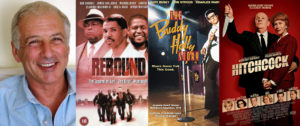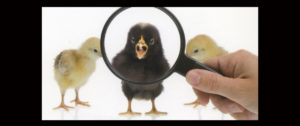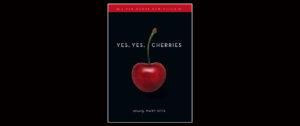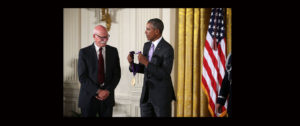Yesterday, Sunday April 14, 2019, I was on the campus of the University of Southern California. It was the second day of the Los Angeles Times-USC Book Festival. Circa 2 p.m., after a bland intro—usually the introductions for T.C. Boyle at such an affair are Nobel worthy, they’re dynamite—T.C. Boyle walked across the stage in the auditorium of the Ronald Tudor Building and stepped to the microphone. He said that he had just arrived on campus thirty minutes earlier, stressed by the thought of being late or worse. What had happened? His flight from Austin to Los Angeles had been delayed for more than four hours; the pilot for his flight was still in Chicago. Was he worse for the wear? If he were, based upon his trademark outstanding performance, I as a veteran of scores of his readings dating back to 2002, couldn’t tell.
What was he wearing? I only raise this topic because a reviewer of his just-published novel, Outside Looking In, had described Dr. Boyle as being “flamboyantly coiffed and punk-stylish” at his book-tour appearances. I’ve since read that review and will have more to say about it later.
Dr. Boyle wore a white-and-black checkered sportscoat over a dark-blue-and-black narrowed-collared shirt. The sportscoat had a leather collar and thin lapels. He wore dark pants suited to the sportscoat and his trademark red sneakers. All I care to say about the foregoing published comment about Dr. Boyle’s appearance is that I lived through the age of punksters. Their attention to their dress could never have equaled let alone approached Dr. Boyle’s attention to detail: his observations of the universe and his characters in his prose or in his written feedback to his students. Like many things about Dr. Boyle, his attire is sui generis, it’s energetic, it’s delightful, it’s original. Punk rock it is not.
What qualities does Dr. Boyle possess that are mainstream? Having known him for more than a decade-and-a-half I can say with confidence that his mainstream qualities include his love and devotion to his family, to his students, and to the earth. Okay, he loves dogs. And his agent.
Enough preface as this isn’t a New Yorker essay. As I guessed, Dr. Boyle’s discussion of the prelude to Outside Looking In was expository. Then he read the first scene in Part 1, chapter 1. I have two things to say about the narration. First, he didn’t disappoint. Not at all. Not in the least. Also, with his first spoken words, I was in the mind and in the on-edge nervous system of Fitz Loney, the point-of-view character in Part 1.
The audience? Quiescent. Not a cough, not the sound of a crinkling candy wrapper, not the irritating sound of a chair scrapping the floor. It was if there was a collective holding of breath and then, when the narration of the first scene ended, the reading complete, the sigh of a group exhale, a slow clap crescendoing to no less than the sound of a standing ovation was heard.
Okay, that last part didn’t exactly happen exactly that way. There was enthusiastic clapping, sure. But I think that like me, the other members of the audience were caught in the collective grip of catching their breath, so enthusiastic clapping was the best they could manage. Now are you going to accuse me of hyperbole? Be my guest. But I will say, and no one who was there can dispute this: the prose and the narration were awesome.
Here is what you can expect me to report and comment on down the line. My review of the book, Outside Looking In. And if time permits, if I live long enough, I may write my review the other mainstream reviews.















































